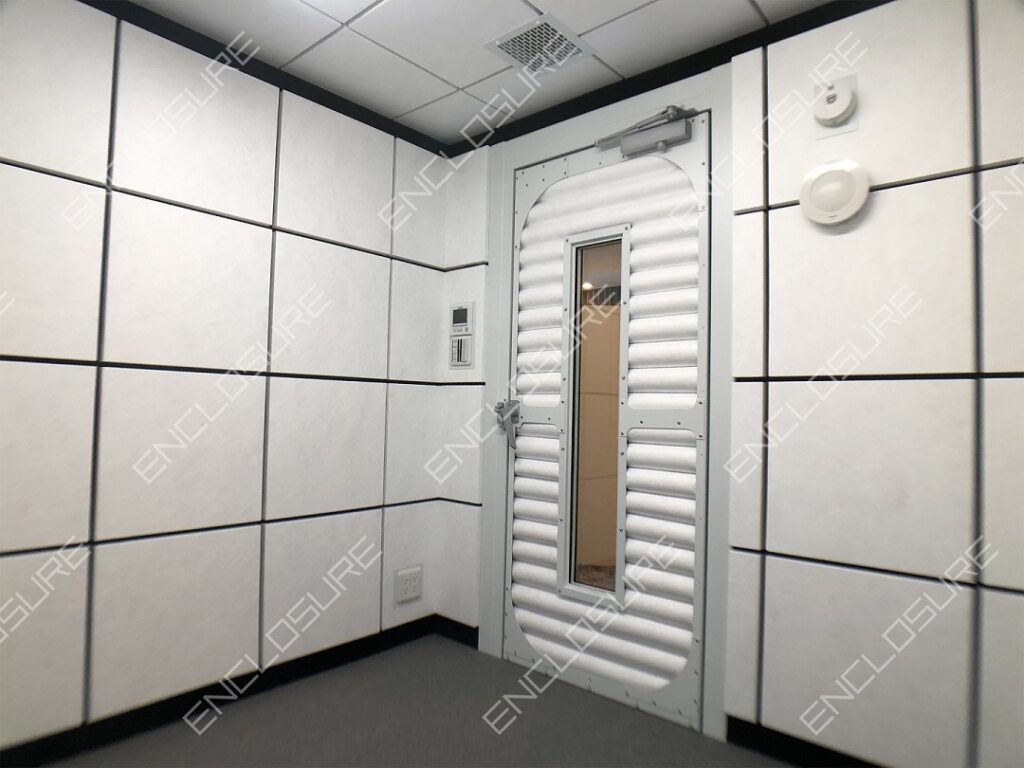Five Key Points for Soundproof Design in Audiometric Rooms ─ Covering Structure, Materials, Ventilation, and Installation ─

Introduction | How Soundproofing Design Impacts Testing Accuracy
Soundproofing requirements for audiometric rooms go far beyond those of ordinary quiet spaces.
In clinical settings—especially for pure-tone audiometry and hearing aid fitting—an environment close to medical-grade silence (20–30 dB SPL or less) is essential. The quality of acoustic design directly affects the reliability of hearing test results.
This article outlines five essential elements of effective soundproofing design, covering structure, materials, ventilation, and testing practices.
1. Sorameta Panel-Based Soundproof Construction | High Performance, Compact Form
The core of effective soundproofing lies in the wall structure—particularly using the “Sorameta Panel” developed by Sonora Technology Co., Ltd.
- Features a unique high-mass laminated structure, achieving D-50 to D-60 level sound insulation in just a few centimeters of thickness
- Offers high performance in a compact space, superior to conventional multi-layer gypsum board constructions
- Prefabricated panel system enables rapid installation and high constructability
When combined with floating floors and acoustic interiors, Sorameta Panels deliver excellent isolation across walls, ceilings, and floors—allowing the efficient creation of ultra-quiet audiometric environments.
2. Soundproof Doors and Openings | Control Weak Points
Openings such as doors and cable ports are often weak points in acoustic performance.
To maintain overall sound isolation, specialized doors and proper sealing must be applied.
- Use STC-rated acoustic doors
- Apply soundproof gaskets and sealing materials to door edges and cable penetrations
While simple in concept, these elements are crucial to maintaining room-wide quietness.
3. Acoustic Absorption | Creating a Non-Reflective Space
Internal reflections and reverberation can interfere with test accuracy and subjective perception.
Effective acoustic absorption ensures a clear, non-reflective sound field.
- Apply high-absorption materials (α ≥ 0.99) to walls and ceilings
- The BF Series by Sonora Technology Co., Ltd. (BFW, BFB, BFP) provides stable absorption across a wide frequency range
- Aim for a K2 correction value ≤ 2.0 dB
Such treatment also enhances comfort for patients, minimizing stress during testing.
4. HVAC and Ventilation | Balancing Quiet and Comfort
No matter how well a room is insulated, HVAC noise can undermine its effectiveness.
To ensure success, acoustic and climate design must be integrated from the beginning.
- Systems should maintain quiet airflow without compromising thermal comfort
- Close coordination between acoustic planning and mechanical design is key to achieving both quiet and comfort
5. Verification and Testing | Proving Performance through Measurement
Even a perfectly designed space must undergo objective testing to confirm its effectiveness.
For clinical environments, the following tests are recommended:
- Ambient noise measurement using A-weighted and 1/3-octave band analysis
- K2 correction testing to confirm low reflection characteristics
- Target values: 20–25 dB SPL ambient noise, K2 ≤ 2.0 dB
These data not only ensure acoustic performance but can also support compliance audits, medical documentation, and grant applications.
Conclusion | True Quiet Requires Technical Integration
An audiometric room is not simply a “soundproof box”—it’s a high-precision medical sound environment.
By coordinating the five factors of structure, absorption, openings, HVAC, and testing, we can realize spaces that fulfill clinical accuracy, safety, and comfort.
At Enclosure Co., Ltd., we work closely with Sonora Technology products to deliver reliable, high-performance audiometric environments tailored to your needs.
When medical-grade quietness is required, we’re ready to help.
